Related Research Articles

Edward IV was King of England from 4 March 1461 to 3 October 1470, then again from 11 April 1471 until his death in 1483. He was a central figure in the Wars of the Roses, a series of civil wars in England fought between the Yorkist and Lancastrian factions between 1455 and 1487.

Richard Neville, 16th Earl of Warwick, 6th Earl of Salisbury, known as Warwick the Kingmaker, was an English nobleman, administrator, landowner of the House of Neville fortune and military commander. The eldest son of Richard Neville, 5th Earl of Salisbury, he became Earl of Warwick through marriage, and was the wealthiest and most powerful English peer of his age, with political connections that went beyond the country's borders. One of the leaders in the Wars of the Roses, originally on the Yorkist side but later switching to the Lancastrian side, he was instrumental in the deposition of two kings, which led to his epithet of "Kingmaker".
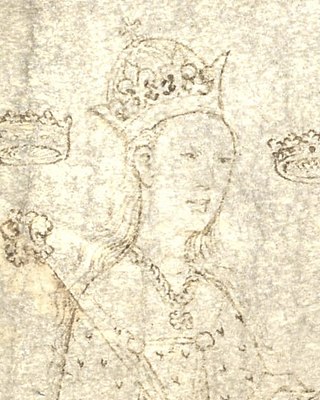
Anne Neville was Queen of England as the wife of King Richard III. She was the younger of the two daughters and co-heiresses of Richard Neville, 16th Earl of Warwick. Before her marriage to Richard, she had been Princess of Wales as the wife of Edward of Westminster, Prince of Wales, the only son and heir apparent of King Henry VI.

Richard of York, 3rd Duke of York, also named Richard Plantagenet, was a leading English magnate and claimant to the throne during the Wars of the Roses. He was a member of the ruling House of Plantagenet by virtue of being a direct male-line descendant of Edmund of Langley, King Edward III's fourth surviving son. However, it was through his mother, Anne Mortimer, a descendant of Edward III's second surviving son, Lionel of Antwerp, that Richard inherited his strongest claim to the throne, as the opposing House of Lancaster was descended from John of Gaunt, Duke of Lancaster, the third surviving son of Edward III. He also inherited vast estates and served in various offices of state in Ireland, France and England, a country he ultimately governed as Lord Protector due to the mental instability of King Henry VI.

Cecily Neville was an English noblewoman, the wife of Richard, Duke of York (1411–1460), and the mother of two kings of England—Edward IV and Richard III. Cecily Neville was known as "the Rose of Raby", because she was born at Raby Castle in Durham, and "Proud Cis", because of her pride and a temper that went with it, although she was also known for her piety. She herself signed her name "Cecylle".
John Neville, 1st Marquess of Montagu was a major magnate of fifteenth-century England. He was a younger son of Richard Neville, 5th Earl of Salisbury, and the younger brother of Richard Neville, Earl of Warwick, the "Kingmaker".

Ralph Neville, 1st Earl of WestmorlandEarl Marshal, was an English nobleman of the House of Neville.

Henry Percy, 3rd Earl of Northumberland, was an English magnate.

The Rout of Ludford Bridge was a largely bloodless confrontation fought in the early years of the Wars of the Roses. It took place on 12 October 1459, and resulted in a setback for the Yorkists. Although this seemed to be a triumph for the rival Lancastrians at the time, they had thrown away their advantage within six months.

The Act of Accord was an Act of the Parliament of England which was passed on 25 October 1460, three weeks after Richard of York had entered the Council Chamber and laid his hand on the empty throne. Under the Act, King Henry VI of England was to retain the crown for life, but York and his heirs were to succeed him, excluding Henry's son, Edward of Westminster. Henry was forced to agree to the Act.

George Neville was Archbishop of York from 1465 until 1476 and Chancellor of England from 1460 until 1467 and again from 1470 until 1471.
William Booth or Bothe was Bishop of Coventry and Lichfield from 1447 before becoming Archbishop of York in 1452 until his death in 1464.
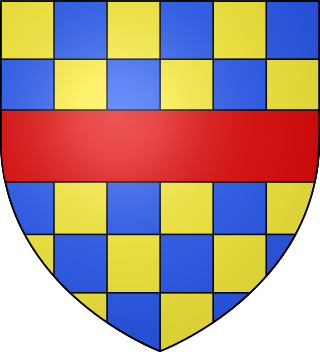
John Clifford, 9th Baron Clifford, 9th Lord of Skipton was a Lancastrian military leader during the Wars of the Roses in England. The Clifford family was one of the most prominent families among the northern English nobility of the fifteenth century, and by the marriages of his sisters, John Clifford had links to some very important families of the time, including the earls of Devon. He was orphaned at twenty years of age when his father was slain by partisans of the House of York at the first battle of the Wars of the Roses, the Battle of St Albans in 1455. It was probably as a result of his father's death there that Clifford became one of the strongest supporters of Margaret of Anjou, wife of King Henry VI, who ended up as effective leader of the Lancastrian faction.
John Neville, Baron Neville was an English nobleman who fought for the House of Lancaster during the Wars of the Roses. He belonged to a senior but impoverished branch of the Neville family of northern England, which had earlier been disinherited in favour of a younger branch headed by John's half–uncle, Richard, Earl of Salisbury. John Neville and his brothers spent several years feuding with Salisbury over the contested inheritance and, when the dynastic wars broke out, John sided with the Lancastrians whilst the junior Nevilles sided with the House of York.
Leofwin was a medieval Bishop of Lichfield.
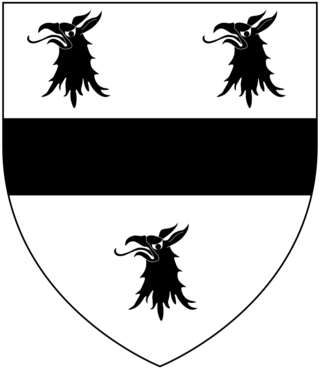
John Hales was Bishop of Coventry and Lichfield (1459-1490). He was one of the Worthies of Devon of the biographer John Prince (d.1723).
Events from the 1450s in England.
Events from the 1480s in England. This decade marks the beginning of the Tudor period.
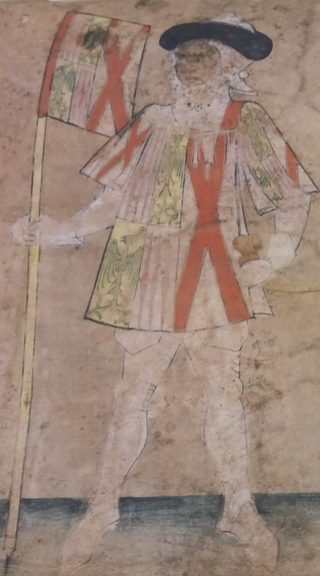
Sir Thomas Neville was the second son of Richard Neville, 5th Earl of Salisbury, a major nobleman and magnate in the north of England during the fifteenth-century Wars of the Roses. Sir Thomas was a younger brother to the more famous Richard Neville, Earl of Warwick, the 'Kingmaker'. Thomas worked closely with them both in administering the region for the Crown and became a leading player in the turbulent regional politics of northern England in the early 1450s, especially in the Neville family's growing local rivalry with the House of Percy. In the armed feud between both houses, which broke out in 1453 and lasted two years, Thomas and his brother John launched a series of raids, ambushes and skirmishes across Yorkshire against the Percy family. Historians describe the feud as setting the stage for the Wars of the Roses, the dynastic struggle between the houses of Lancaster and York for the English throne, and Thomas played a large role in the Neville family's alliance with his uncle, Richard, Duke of York.
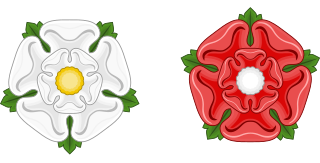
The siege of the Tower of London was an episode of the Wars of the Roses, in which adherents of the rival Plantagenet houses of Lancaster and York were pitted against each other. In June 1460, several Yorkist nobles, who had unsuccessfully rebelled against King Henry VI the year before and had fled to Calais, invaded the south east of England at Sandwich. They enjoyed widespread support through popular discontent with the ruling court among the populace of Kent and the merchants of London, and were greeted by enthusiastic crowds when they entered London on 2 July.
References
- ↑ Linda Clark, "On this Day: 20 November 1459, The 'Parliament of Devils' assembles at Coventry", History of Parliament Online. Retrieved 05 April 2021.
- ↑ A. J. Pollard, The Wars of the Roses, second edn. (Basingstoke: Palgrave, 2001), 23-24.
- ↑ Handbook of British Chronology (London: Royal Historical Society, 1986), p. 570.
- ↑ Handbook of British Chronology (London: Royal Historical Society, 1986), p. 570.


